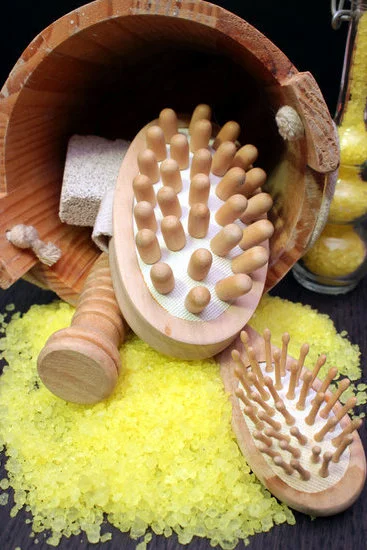Are you curious about how do the aromatherapy lamps work? Aromatherapy lamps are a popular and effective way to create a soothing and calming atmosphere in any space.
By using essential oils and diffusing them into the air, these lamps can have a profound effect on mood, emotions, and overall well-being. In this article, we will explore the science behind aromatherapy, the mechanism of action of aromatherapy lamps, the different types of essential oils used, their therapeutic properties, and much more.
Aromatherapy has been used for centuries as a holistic approach to health and wellness. It involves the use of natural plant extracts to promote physical and psychological well-being. Aromatherapy lamps are an integral part of this practice, serving as a method for dispersing essential oils in the air to create an inviting ambiance while harnessing the benefits of aromas.
The concept of aromatherapy lamps is rooted in the idea that our sense of smell can have a powerful impact on our emotions and mindset. The inhalation of aromatic molecules stimulates brain activity and triggers chemical responses that can influence our mood, stress levels, and cognitive function.
Understanding how these lamps work and how they can be used effectively is key to maximizing their benefits in daily life. Let’s delve deeper into the world of aromatherapy lamps and discover their potential for enhancing overall well-being.
Understanding the Science Behind Aromatherapy
Aromatherapy lamps are not just decorative pieces; they serve a purpose in promoting a soothing and calming atmosphere. One may wonder, how do the aromatherapy lamps work? The answer lies in the science behind sensory stimulation and how it can affect mood and emotions. When essential oils are diffused into the air through an aromatherapy lamp, they stimulate the olfactory system, triggering reactions in the brain that can influence emotions and overall well-being.
The olfactory system is closely linked to the limbic system in the brain, which is responsible for regulating emotions, stress responses, and memory. When we inhale essential oils released by aromatherapy lamps, they travel through the nasal cavity and trigger receptors that send signals to the limbic system. This process can lead to the release of neurotransmitters like serotonin and dopamine, which are known to promote feelings of relaxation and happiness.
In addition to affecting mood and emotions, aromatherapy also has physiological effects on the body. Certain essential oils have been shown to have antimicrobial properties when dispersed into the air, helping to purify the surrounding environment. This dual action of influencing both emotional and physical well-being makes aromatherapy lamps a valuable tool in promoting overall wellness.
The Role of Essential Oils
Aromatherapy lamps are designed to create a soothing and calming atmosphere by diffusing essential oils into the air. These oils are known for their various therapeutic properties and have been used for centuries to promote physical and emotional well-being. The use of essential oils in aromatherapy lamps is an integral part of the practice, as different types of oils can produce different effects on mood and emotions.
There are numerous essential oils commonly used in aromatherapy, each with its own distinct aroma and therapeutic properties. Lavender oil, for example, is well-known for its relaxing and stress-relieving properties, making it a popular choice for aromatherapy lamps. Peppermint oil, on the other hand, is often used to promote alertness and mental clarity. Other popular essential oils used in aromatherapy lamps include eucalyptus, lemon, and chamomile, each offering unique benefits for overall well-being.
It’s important to note that not all essential oils are suitable for use in aromatherapy lamps as some may be irritating when dispersed into the air. It is crucial to carefully read instructions and guidelines provided with each type of essential oil before using them in an aromatherapy lamp. In addition, individuals should also consider their own preferences and needs when selecting an essential oil for their aromatherapy lamp in order to personalize their experience.
| Essential Oil | Therapeutic Properties |
|---|---|
| Lavender | Relaxation, stress relief |
| Peppermint | Mental clarity, alertness |
| Eucalyptus | Congestion relief |
| Lemon | Uplifting, purifying |
How Do Aromatherapy Lamps Work
Aromatherapy lamps work by using heat or ultrasonic vibrations to effectively diffuse essential oils into the air, creating a pleasant and fragrant atmosphere. There are two main types of aromatherapy lamps: heat-based and ultrasonic.
Heat-based aromatherapy lamps utilize a small reservoir or dish where the essential oil is placed. A small tea light candle or an electric heating element underneath the reservoir gently warms the oil, causing it to evaporate and release its aroma into the air. This method is simple and easy to use, but it’s important to monitor the temperature to prevent overheating and degradation of the essential oils.
On the other hand, ultrasonic aromatherapy lamps use electronic frequencies to create high-frequency vibrations in water, which then vaporize the essential oils and disperse them as a fine mist into the air. This process not only effectively distributes the scent but also helps to humidify the surrounding environment, making it especially beneficial for dry indoor spaces.
Overall, regardless of their specific type, aromatherapy lamps provide a convenient and efficient way to enjoy the therapeutic benefits of essential oils throughout your home or workspace.
Some key points on how do aromatherapy lamps work:
- Heat-based lamps utilize a small reservoir or dish where essential oils are placed
- Ultrasonic lamps create high-frequency vibrations in water to disperse essential oil mist
- Both methods effectively diffuse essential oils into the air for a pleasant and fragrant atmosphere
By understanding how these devices function, individuals can make informed decisions on which type of aromatherapy lamp best suits their needs and preferences. Whether seeking stress relief, improved sleep, or mood enhancement, incorporating an aromatherapy lamp into one’s daily routine can be a simple yet effective way to promote overall well-being.
Benefits of Using Aromatherapy Lamps
Aromatherapy lamps offer a myriad of benefits that can significantly improve an individual’s overall well-being. One of the most prominent advantages of using aromatherapy lamps is stress relief. Essential oils such as lavender, chamomile, and bergamot have been shown to have calming and relaxing effects on the mind and body. When these oils are diffused into the air through an aromatherapy lamp, they can help reduce stress and anxiety, promoting a sense of tranquility and peace.
In addition to stress relief, aromatherapy lamps can also contribute to improved sleep quality. Certain essential oils, such as lavender and cedarwood, have sedative properties that can aid in promoting better sleep patterns. Using an aromatherapy lamp with these essential oils before bedtime can create a soothing atmosphere conducive to relaxation, ultimately leading to more restful and rejuvenating sleep.
Furthermore, the use of aromatherapy lamps has been linked to enhanced mood and emotional well-being. Citrus-based essential oils like lemon, sweet orange, and grapefruit are known for their uplifting and revitalizing properties. When diffused into the air through an aromatherapy lamp, these oils can help alleviate feelings of sadness or fatigue, leaving individuals feeling more energized and emotionally balanced.
| Benefits | Associated Essential Oils |
|---|---|
| Stress Relief | Lavender, Chamomile, Bergamot |
| Improved Sleep | Lavender, Cedarwood |
| Enhanced Mood | Lemon, Sweet Orange, Grapefruit |
Choosing the Right Aromatherapy Lamp
When it comes to choosing the right aromatherapy lamp, there are several factors to consider in order to select the best one that suits individual needs and preferences.
Types of Aromatherapy Lamps
There are various types of aromatherapy lamps available on the market, including electric diffusers, candle diffusers, and reed diffusers. Each type has its own advantages and disadvantages, so it’s important to understand the differences in order to make an informed decision.
Size and Capacity
Consider the size of the area where you want to use the aromatherapy lamp. Larger rooms may require a more powerful diffuser with a larger capacity, while smaller spaces may be adequately served by a smaller model. It’s also important to consider how long you want the diffuser to run before needing refills.
Material and Design
Aromatherapy lamps come in various materials such as ceramic, glass, or metal. The design of the lamp can also play a role in your decision-making process, as some people may prefer a more decorative option that complements their home decor.
By keeping these tips and guidelines in mind, individuals can make an informed decision when choosing the best aromatherapy lamp for their specific needs and preferences. Whether it’s for relaxation, stress relief, or simply creating an inviting atmosphere at home or in a professional setting, selecting the right aromatherapy lamp is essential in maximizing its benefits.
Using Aromatherapy Lamps Safely
Choosing the Right Essential Oils
When using aromatherapy lamps, it is crucial to choose the right essential oils for your needs. Not all essential oils are suitable for everyone, and some may have adverse effects on certain individuals. It is important to do thorough research or consult with a qualified aromatherapist before selecting the essential oils to use in your aromatherapy lamp. Additionally, consider the purpose of using the aromatherapy lamp – whether it’s for relaxation, mood enhancement, or to alleviate specific health concerns.
Proper Dilution and Usage
One of the most important safety precautions when using aromatherapy lamps is to properly dilute essential oils before diffusing them into the air. Undiluted essential oils can be too potent and may cause skin irritation or respiratory issues when inhaled. Always follow the recommended dilution ratios and usage guidelines provided by reputable sources. Furthermore, it is essential to use the aromatherapy lamp in a well-ventilated area and avoid prolonged exposure.
Regular Maintenance and Cleaning
To ensure safe and effective use of aromatherapy lamps, regular maintenance and cleaning are necessary. Over time, essential oil residues can accumulate in the diffuser, affecting its performance and potentially leading to bacterial growth. Follow the manufacturer’s instructions for cleaning your aromatherapy lamp regularly, using mild cleansers and ensuring that all components are completely dry before reassembling. Additionally, make sure to replace any worn-out parts as needed to prevent malfunctions.
By following these safety precautions and best practices, you can enjoy the therapeutic benefits of aromatherapy lamps while minimizing potential risks associated with their use. Maintaining proper hygiene, choosing suitable essential oils, and using the diffuser appropriately are key factors in creating a safe and enjoyable aromatherapy experience at home or in a professional setting.
Tips for Enhancing Aromatherapy Experience
Aromatherapy lamps are a great way to elevate the atmosphere of any space and promote relaxation, but there are ways to enhance the experience even further. One practical tip for maximizing the benefits of aromatherapy lamps is to create custom essential oil blends. By combining different oils, individuals can tailor the aroma to their specific needs and preferences.
For example, blending lavender with chamomile can create a soothing and calming effect, perfect for winding down after a long day. Experimenting with different combinations can add a personal touch to the aromatherapy experience.
In addition to creating custom blends, incorporating other relaxation techniques can complement the use of aromatherapy lamps. Practicing deep breathing exercises while enjoying the scent of essential oils can amplify the calming effects and promote a sense of tranquility. Meditation or gentle yoga sessions in the presence of aromatherapy lamps can also enhance the overall experience, helping individuals achieve a deeper state of relaxation and mindfulness.
Furthermore, it’s important to consider the environment in which aromatherapy lamps are used. Creating a comfortable and inviting space with soft lighting, cozy blankets, and relaxing music can contribute to a more immersive and enjoyable aromatherapy experience.
Taking the time to curate a peaceful atmosphere can further enhance the benefits of using aromatherapy lamps for stress relief, improved sleep, and enhanced mood. By embracing these tips for enhancing the aromatherapy experience, individuals can fully harness the therapeutic potential of these soothing devices in their daily self-care routines.
Conclusion
In conclusion, aromatherapy lamps offer a simple and effective way to incorporate the benefits of essential oils into daily self-care routines. By understanding the science behind aromatherapy and how sensory stimulation through aromas can affect mood and emotions, individuals can harness the power of these natural remedies for improved well-being.
The use of various essential oils in aromatherapy lamps provides therapeutic properties that promote stress relief, improved sleep, and enhanced mood, making them a valuable addition to a holistic approach to self-care.
One may wonder, how do the aromatherapy lamps work? Aromatherapy lamps work by diffusing essential oils into the air through heat or ultrasonic vibrations, allowing for easy inhalation and absorption of these beneficial compounds.
It is important to choose the right aromatherapy lamp based on individual needs and preferences, ensuring that it is safe to use at home or in a professional setting. By following safety precautions and best practices for using aromatherapy lamps, individuals can create a soothing and calming atmosphere while maximizing the benefits of this relaxation technique.
Incorporating aromatherapy lamps into a holistic self-care routine can greatly contribute to overall well-being. By enhancing the aromatherapy experience through custom blends and other relaxation techniques, individuals can create a personalized environment that promotes relaxation, tranquility, and emotional balance. As such, integrating aromatherapy lamps into everyday life can be an integral part of maintaining physical, mental, and emotional health.
Frequently Asked Questions
How Do You Use Aroma Lamps?
Aroma lamps are used by filling the bowl at the top with water and adding a few drops of essential oil. Then, a tea light is lit underneath to heat the water and disperse the fragrance into the air.
What Do Aroma Lamps Do?
Aroma lamps diffuse essential oils into the air, providing a pleasant and therapeutic fragrance in the room. The heat from the candle or electric light bulb helps to vaporize the oil and spread its aroma.
How Does Aromatherapy Work?
Aromatherapy works by inhaling the aromatic molecules of essential oils, which can have a direct impact on the brain and nervous system. These molecules can also be absorbed through the skin during massages or baths, providing various therapeutic benefits such as relaxation, stress reduction, improved sleep, and relief from certain physical ailments.

Are you looking for a natural way to improve your health and wellbeing?
If so, aromatherapy may be the answer for you.





